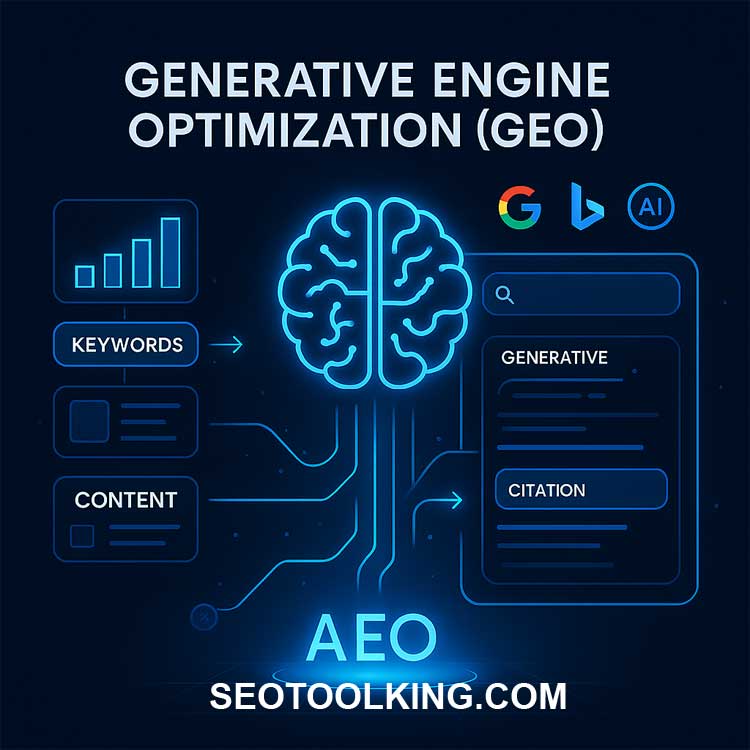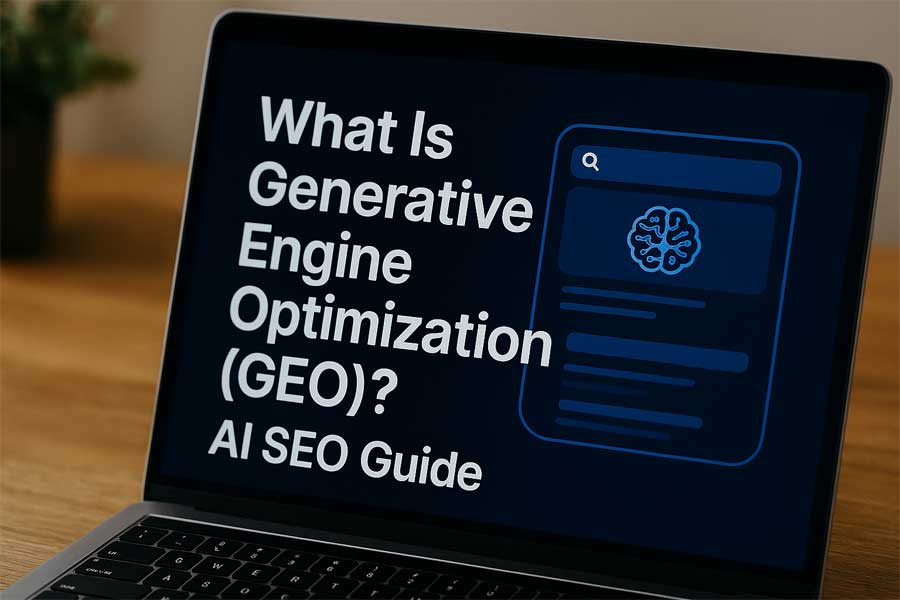As search evolves, traditional SEO alone is no longer enough. With the rise of AI-driven search experiences like Google’s SGE (Search Generative Experience) and advanced large language models (LLMs), a new discipline is emerging: Generative Engine Optimization (GEO).
Generative Engine Optimization is the practice of optimizing your content so it is discoverable, understandable, and cited by AI-powered generative search engines.
At Small SEO Tool, we provide free SEO tools to help you create AI-friendly, GEO-optimized content that ranks higher in both traditional search and generative search results.
What Is Generative Engine Optimization (GEO)?
GEO (Generative Engine Optimization) is a new SEO strategy that focuses on how AI search engines generate answers. Instead of just ranking for keywords, GEO ensures your content is:
- AI-friendly – easy for generative engines to interpret
- Factual and authoritative – so AI systems trust and cite it
- Structured – organized in a way that fits AI-driven Q&A formats
- Comprehensive – covering topics deeply to match conversational queries
👉 Run a free SEO Analyzer Tool check to see if your website is GEO-ready.
Why GEO Matters in 2025 and Beyond
Generative search engines are rapidly changing how users interact with information. GEO matters because it:
- Increases visibility in AI-generated search answers
- Builds authority as a trusted source for AI citations
- Future-proofs your website for AI-first search environments
- Improves rankings in both traditional SEO and AI-driven SEO
👉 Use our Keyword Research Tool at Small SEO Tool to find conversational queries AI engines prioritize.
How to Optimize Content for Generative Engines
Making your content AI-friendly requires adjusting your SEO strategy.
1. Focus on Conversational Long-Tail Keywords
- Example: Instead of “SEO tools,” use “what are the best free SEO tools for beginners.”
- Target natural language questions people ask.
2. Provide Direct, Factual Answers
- Use Q&A formats in your content.
- Keep answers clear, concise, and data-backed.
3. Structure Content for AI Readability
- Use headings (H2, H3) for logical flow
- Add bullet points and numbered lists
- Implement schema markup for structured data
4. Build Authoritative Backlinks
- AI models rely on trustworthy sources
- Earn links from niche-relevant, high-authority websites
👉 Track backlinks with our Backlink Checker Tool.
5. Improve Technical SEO for AI Indexing
- Optimize site speed and mobile experience
- Secure your site with HTTPS
- Fix broken links and duplicate content
👉 Run a Website SEO Audit at Small SEO Tool.

Step-by-Step GEO Optimization Checklist
Follow these actionable steps to make your website AI-friendly and GEO-ready:
- Research Conversational Keywords
- Use long-tail, question-based queries (e.g., “How does GEO SEO work in AI search?”).
- 👉 Try our Keyword Research Tool.
- Write AI-Friendly Content
- Provide direct, clear answers in short sentences.
- Use FAQs and Q&A style formatting.
- Add Structure for Generative Engines
- Use headings (H2, H3) for clarity.
- Format lists, bullet points, and tables.
- Implement schema markup.
- Boost Trust & Authority
- Add citations, case studies, and expert references.
- Earn high-quality backlinks.
- 👉 Track with our Backlink Checker Tool.
- Optimize Technical SEO
- Improve page speed and mobile responsiveness.
- Fix broken links and duplicates.
- 👉 Run a full audit using Website SEO Analyzer.
- Publish & Update Regularly
- Refresh older articles with new data.
- Keep content aligned with AI search updates.
✅ By following this checklist, your site will be GEO-ready and future-proof for AI-powered search engines.
what is generative engine optimization, geo seo guide, ai powered seo, optimize for generative search engines, generative engine optimization explained, llm seo vs geo seo, geo content optimization, ai friendly seo strategies
GEO vs Traditional SEO vs LLM SEO
| Feature | Traditional SEO | LLM SEO | GEO (Generative Engine Optimization) |
|---|---|---|---|
| Focus | Search engine rankings | Optimizing for large language models | Optimizing for AI-powered generative search |
| Content Style | Keyword-rich blogs | Conversational, human-like text | Factual, structured, AI-citable content |
| Goal | SERP visibility | AI model understanding | Inclusion in AI-generated answers |
| Best Use Case | Organic ranking | AI content optimization | Future-proofing content for AI-first search |
GEO Best Practices to Rank Higher
- Research AI-prioritized queries (long-tail, conversational keywords)
- Publish factual, expert-backed content
- Use structured data for AI-friendly indexing
- Earn authoritative backlinks to strengthen credibility
- Update content regularly with fresh insights
👉 Begin optimizing with free tools from Small SEO Tool.
FAQs
Q1: What does GEO mean in SEO?
GEO stands for Generative Engine Optimization, which is optimizing content to appear in AI-powered generative search results.
Q2: How is GEO different from traditional SEO?
Traditional SEO targets keyword rankings, while GEO ensures your content is AI-readable, factual, and citable by generative engines.
Q3: Do I need GEO if I already do SEO?
Yes. SEO remains important, but GEO future-proofs your strategy as AI search becomes more common.
Q4: How can I check if my site is GEO-optimized?
Run a free SEO Analyzer Tool scan at Small SEO Tool to identify optimization gaps.
Q5: Is GEO the future of digital marketing?
Yes, GEO is the next evolution of SEO, ensuring your content is visible in both search results and AI-generated answers.



